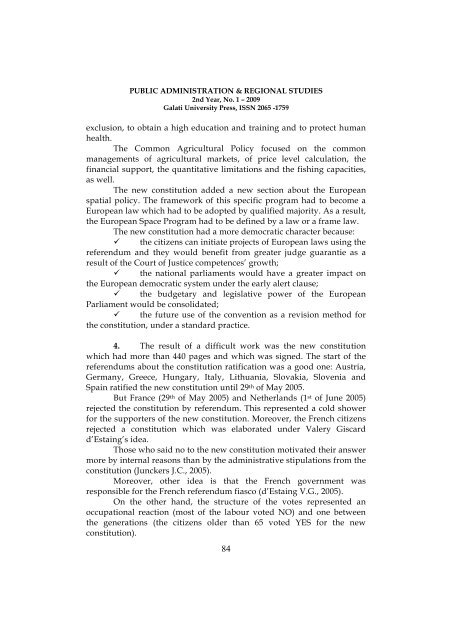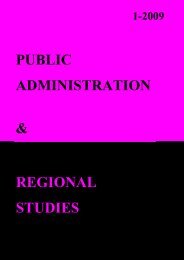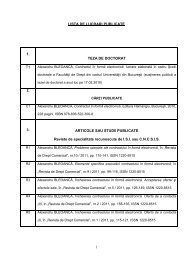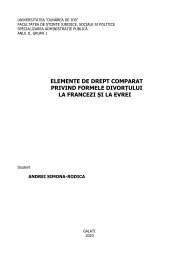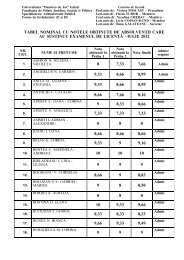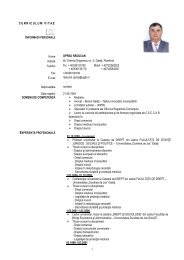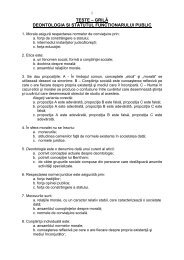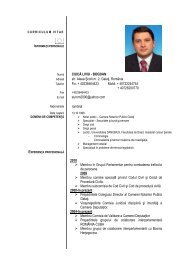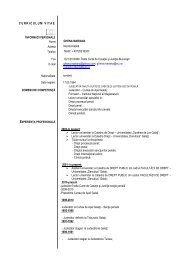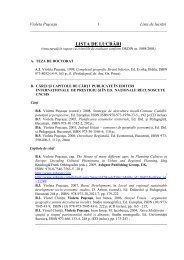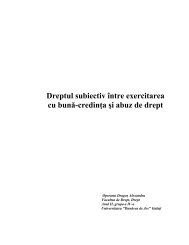regional studies public administration - Facultatea de Drept ...
regional studies public administration - Facultatea de Drept ...
regional studies public administration - Facultatea de Drept ...
Create successful ePaper yourself
Turn your PDF publications into a flip-book with our unique Google optimized e-Paper software.
PUBLIC ADMINISTRATION & REGIONAL STUDIES<br />
2nd Year, No. 1 – 2009<br />
Galati University Press, ISSN 2065 -1759<br />
exclusion, to obtain a high education and training and to protect human<br />
health.<br />
The Common Agricultural Policy focused on the common<br />
managements of agricultural markets, of price level calculation, the<br />
financial support, the quantitative limitations and the fishing capacities,<br />
as well.<br />
The new constitution ad<strong>de</strong>d a new section about the European<br />
spatial policy. The framework of this specific program had to become a<br />
European law which had to be adopted by qualified majority. As a result,<br />
the European Space Program had to be <strong>de</strong>fined by a law or a frame law.<br />
The new constitution had a more <strong>de</strong>mocratic character because:<br />
the citizens can initiate projects of European laws using the<br />
referendum and they would benefit from greater judge guarantie as a<br />
result of the Court of Justice competences’ growth;<br />
the national parliaments would have a greater impact on<br />
the European <strong>de</strong>mocratic system un<strong>de</strong>r the early alert clause;<br />
the budgetary and legislative power of the European<br />
Parliament would be consolidated;<br />
the future use of the convention as a revision method for<br />
the constitution, un<strong>de</strong>r a standard practice.<br />
4. The result of a difficult work was the new constitution<br />
which had more than 440 pages and which was signed. The start of the<br />
referendums about the constitution ratification was a good one: Austria,<br />
Germany, Greece, Hungary, Italy, Lithuania, Slovakia, Slovenia and<br />
Spain ratified the new constitution until 29 th of May 2005.<br />
But France (29 th of May 2005) and Netherlands (1 st of June 2005)<br />
rejected the constitution by referendum. This represented a cold shower<br />
for the supporters of the new constitution. Moreover, the French citizens<br />
rejected a constitution which was elaborated un<strong>de</strong>r Valery Giscard<br />
d’Estaing’s i<strong>de</strong>a.<br />
Those who said no to the new constitution motivated their answer<br />
more by internal reasons than by the administrative stipulations from the<br />
constitution (Junckers J.C., 2005).<br />
Moreover, other i<strong>de</strong>a is that the French government was<br />
responsible for the French referendum fiasco (d’Estaing V.G., 2005).<br />
On the other hand, the structure of the votes represented an<br />
occupational reaction (most of the labour voted NO) and one between<br />
the generations (the citizens ol<strong>de</strong>r than 65 voted YES for the new<br />
constitution).<br />
84


